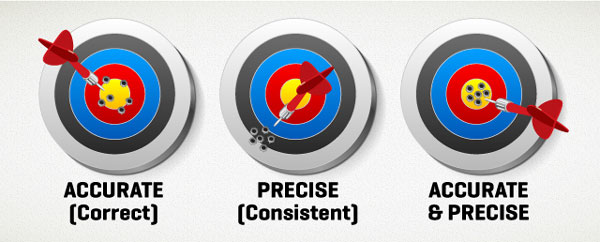Accuracy vs. precision in web analytics
When looking at web analytics reports, it’s easy to get sucked in by the numbers and start treating the metrics as accurate counts. But, as we’ve said before, analytics tools are not 100% accurate and precise.
Accurate vs. Precise



A quick comparison above shows results from two different analytics tools that vary widely, but that show similar trends across time when overlaid on top of each other. The blue line represents the Google Analytics data for number of visits and the red line represents the website’s content management system data. The actual visitor numbers are off by a huge amount, but the trends match. The measurements are precise (consistent), but we don’t know whether either one is accurate (correct).
Since the data are consistent, you can analyze changes and trends, without having to focus on exact values. In this example, you can analyze how the number of visitors changes over time, either comparing numbers from year to year or spotting seasonal trends over a single year. You can read more about gaining insights through comparisons in “The Right Way to Use Analytics.”
